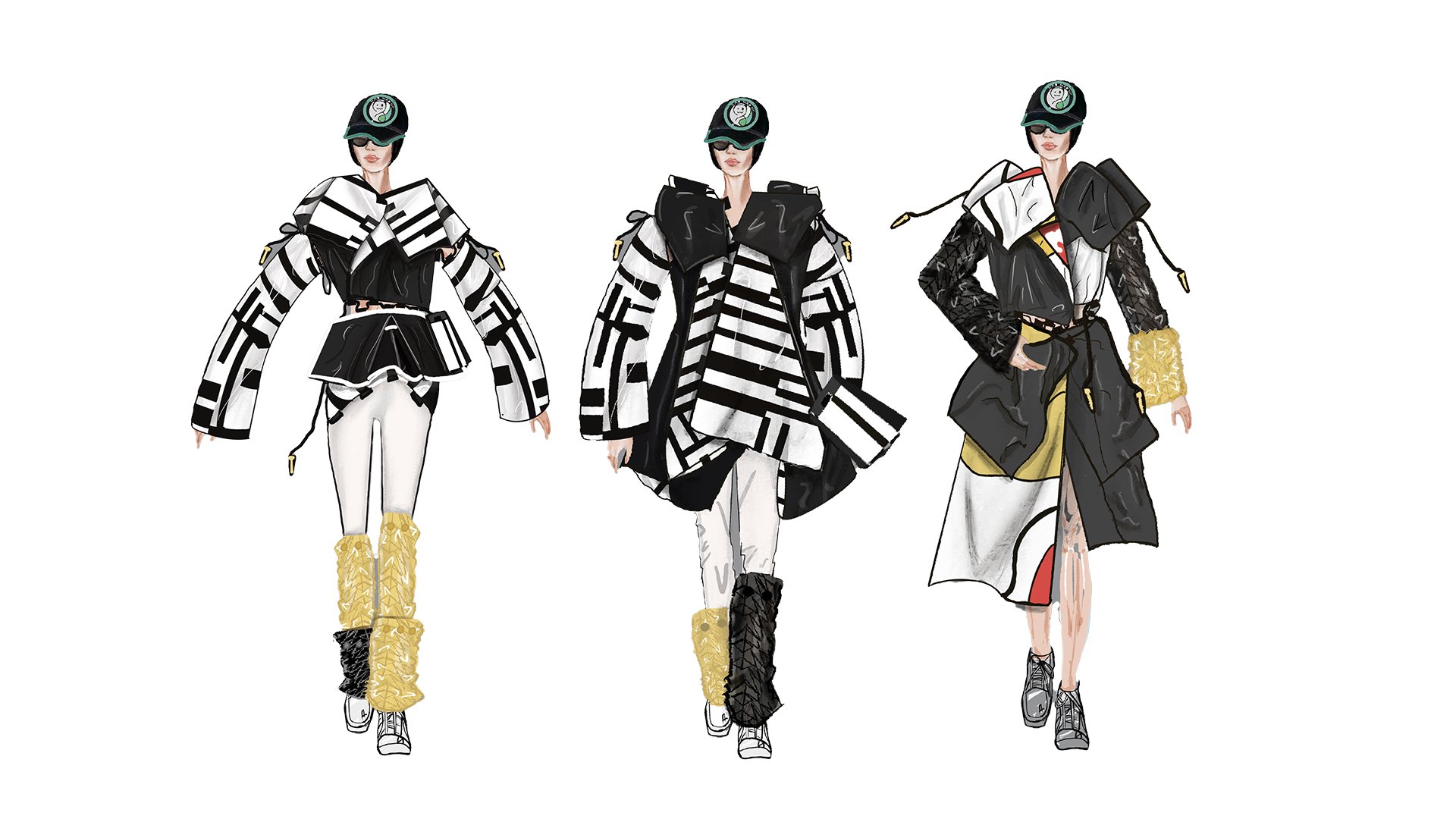Su Anli
Redress Design Award 2024 finalist
Bio
Su Anli is a Finalist of the Redress Design Award 2024. She is studying for her MA in Fashion Design from Shih Chien University, Taiwan and has also studied Pattern Drafting & Dress Making with Continuing Education at Shih Chien University.
“It is essential for all stages of production to prioritise positive environmental impact.” – Su Anli
redress Design Award Collection
Anli’s Redress Design Award collection, ‘Disappearing Space’, draws inspiration from the disappearance of spaces worldwide due to pollution, extreme weather, and rising sea levels. Her collection repurposes discarded materials into origami-inspired and modular designs, using zero-waste patterns to avoid offcuts. Creating three-dimensional geometric spaces on the human body inspired by architecture, she uses sample yardage fabric and incorporates longevity by allowing transformation, replacement, and various configurations through Lego-like separation and connection with loops and ropes.
Q&A WITH THE DESIGNER
1. Who or what inspired you to pursue sustainable fashion, and inspired the creativity behind your Redress Design Award collection?
I was inspired to pursue sustainable fashion through my working experience, where I saw significant pollution occurring at each stage of mass production. To combat this and create positive environmental impact, I use circular design strategies with creativity and an innovative mindset. My advisor at Shih-Chien University has also been crucial in encouraging me towards sustainable fashion by innovating traditional techniques.
My collection is inspired by the concept of space, using modular design to highlight how clothing transforms the body as a canvas and to reflect the necessity of adapting to one’s environment.
2. What makes your Redress Design Award collection uniquely sustainable? (considering sustainable design techniques you have used in your collection, e.g. zero-waste, upcycling, reconstruction; or waste sources you have chosen)
Inspired by origami, my collection features folded components made with zero waste. Combined with monofibre sourcing, modular design, the garments can be worn in many ways, creating multi-functional and multi-size options. This contributes to consumer participation, offering longevity, repairability, and recyclability.
3. What is your career dream or goal? How do you see yourself developing in sustainable fashion in the future?
My goal is to become an influential designer and researcher in circular fashion. I will continue developing in this field by deepening my research into sustainable design methodologies and innovations, and building a slow sustainable fashion brand that adapts to market inquiries.
4. As a sustainable fashion designer, what is one item you must always keep with you?
The innovation of zero-waste techniques is something I always keep in mind. I constantly focus on creating and refining methods that minimise or eliminate textile waste, designing for low environmental impact in my creative processes.
5. Anything else you would like to share with us about you or your collection?
This collection is made up of various folded components that can be worn in many different ways. Through upcycling small pieces of textile waste, I create modular designs that are detachable. This also lends itself to market viability, in which the components can be sold individually rather than as an entire garment, allowing consumers to express their personal style through unique configurations.
news
REGION:
Taiwan
DESIGN TECHNIQUES:
Zero-waste, Upcycling, Reconstruction
COLLECTION:
Gender neutral







